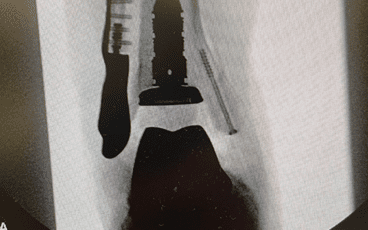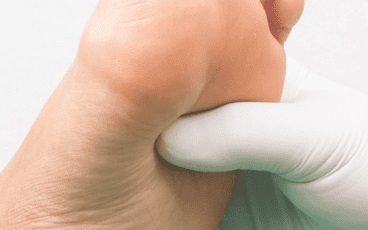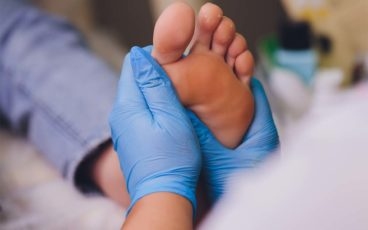Many people have heard of the injury referred to as “shin splints” which frequently affect people who engage in moderate-to-heavy physical activity. However the term shin splint is used to describe various overuse injuries affecting both the soft tissue and bone. One specific type of shin splint, Medial tibial stress syndrome (MTSS), is limited to the lower third of the inside of the tibia (lower leg).
This overuse phenomenon of MTSS is usually associated with high impact sports, like running, basketball, football and hockey. It is exercise-induced pain along themiddle-distal tibia, associated with exertion, and typically occurs either late in the season after prolonged activity or during the initial rigors of pre-season training.
The main symptom is pain along the inner edge of your shin bone. The area may also be tender and swollen. The pain is often described as (recurring dull ache) and palpable tenderness along the inside of the lower leg. Early on in MTSS, you may experience pain at the beginning of exercise, which subsides with continued training activity. It is usually associated with exertion and is relieved with rest; however, in advanced stages, pain may be present throughout daily activity. It very important for this type of injury to be evaluated by a health professional early on, in order to rule out a tibial stress reaction/fracture.
Causes of MTSS
Medial tibial stress syndrome is an overuse injury. The foot and shin bone work together to absorb force when you run, with the muscles in the foot and lower leg adapting to the stress on your shin bone and the membrane surrounding it. If your shin bones don’t adapt and strengthen in line with your training, this can lead to pain.
Although there is limited scientific evidence to support this idea, current understanding of the mechanics of running suggests that you may be more likely to develop medial tibial stress syndrome if your foot tends to overpronate (roll inwards).
It may be important for you to have a podiatrist assess your foot and lower leg movement (biomechanics). A podiatrist is a healthcare professional who specializes in conditions affecting the lower leg, ankle and foot. You may be referred to him or her for a gait analysis.
Additional causes include:
- biomechanical alignment
- mechanical faults
- muscle imbalance
- forefoot pronation or blindfoot varus
- changes in training intensity or duration
- lack of flexibility
- weakness in the pelvic stabilizers
- improper footwear
Diagnosis
A thorough history and physical exam are usually sufficient to make the diagnosis of MTSS. Patients may require further imaging or work-up to rule out stress fractures or other pathology.
Treatment
Treatment for MTSS is variable and unproven.
- Seven to 10 days of rest are usually sufficient to alleviate symptoms and return to gradual activity; however, 6 weeks is recommended before complete return to sports.
- Heel-cord stretching and foot orthoses can help correct muscle imbalance and foot alignment, respectively. Substituting limited-impact sports such as bicycling or swimming or use of elliptical cross-trainers can help patients maintain aerobic fitness and allow for recovery. The use of nonsteroidal medications is reasonable as an adjunct to address the inflammatory nature of the condition.
- Once the injury has been evaluated and the possibility of stress fracture is ruled out, a session of Active Release (ART) can reduce the tension and restore tissue integrity in the affected structures.
- Pelvic or trunk stability exercises and leg muscle exercises can improve any biomechanical imbalances.
- Various other physiotherapy techniques can be recommended to improve your strength and flexibility.
- Medical acupuncture and electric modalities can be used to help reduce the pain and promote healing.
- A biomechanical running analysis can be performed to identify functional weakness in the chain which may be predisposing you to injury and to help prescribe appropriate exercise.
- Footwear (shoe type and orthotics) and training program should also be assessed and tailored to your needs.
If all these areas are addressed, recovery time and recurrence rates can be drastically reduced.
The Illinois Bone & Joint Institute has more than 90 orthopedic physicians, and 20 locations throughout Chicago.




